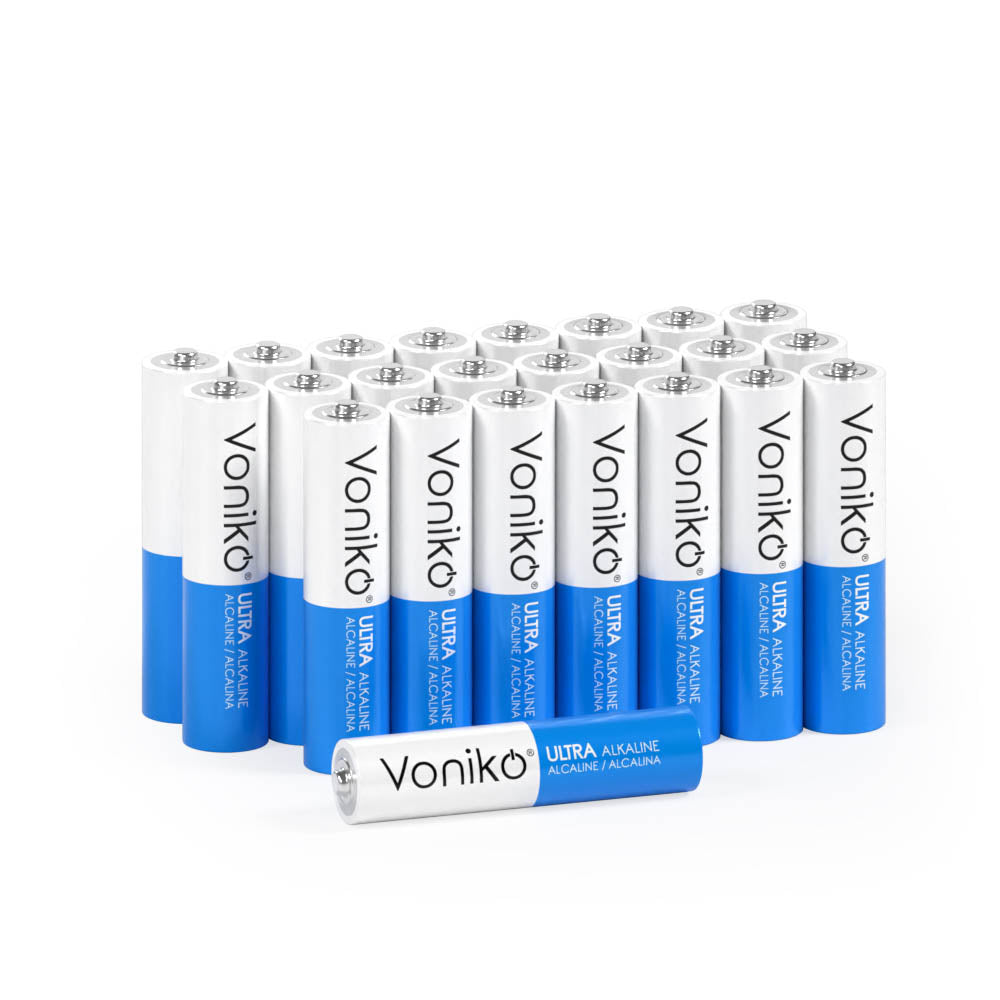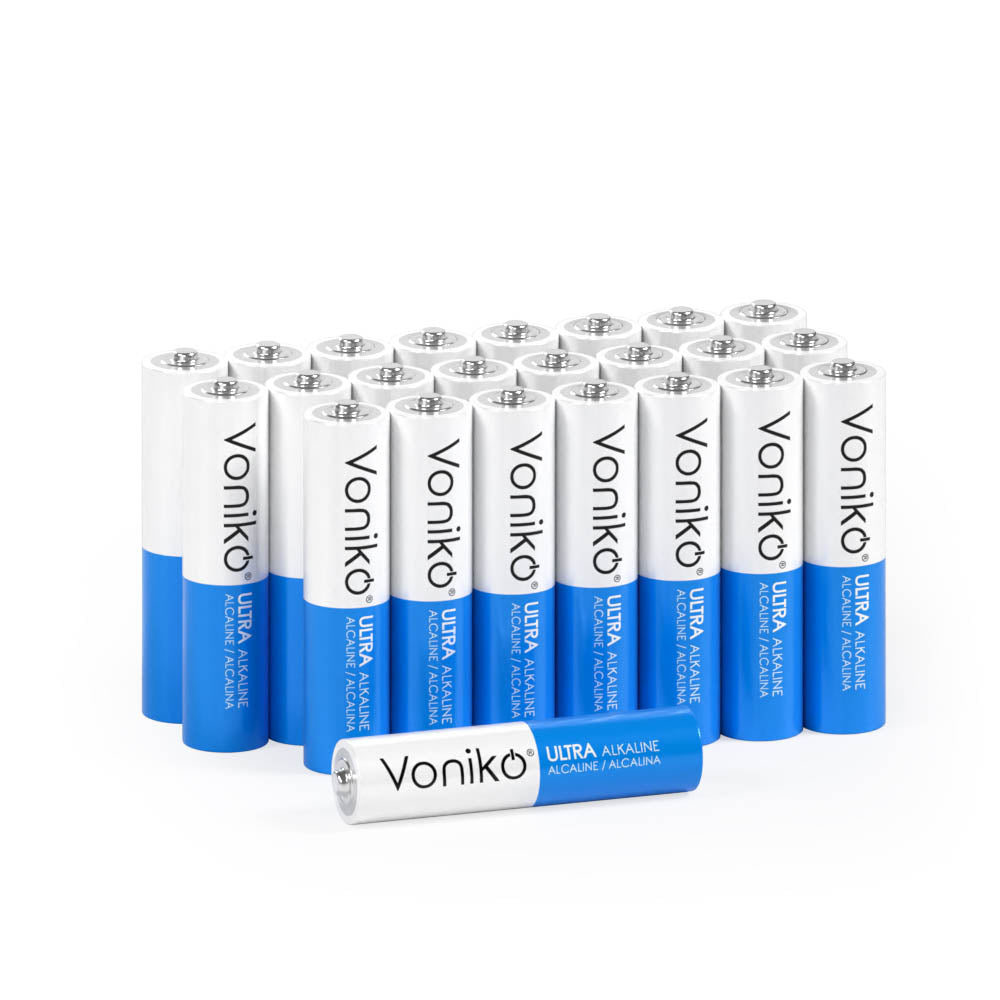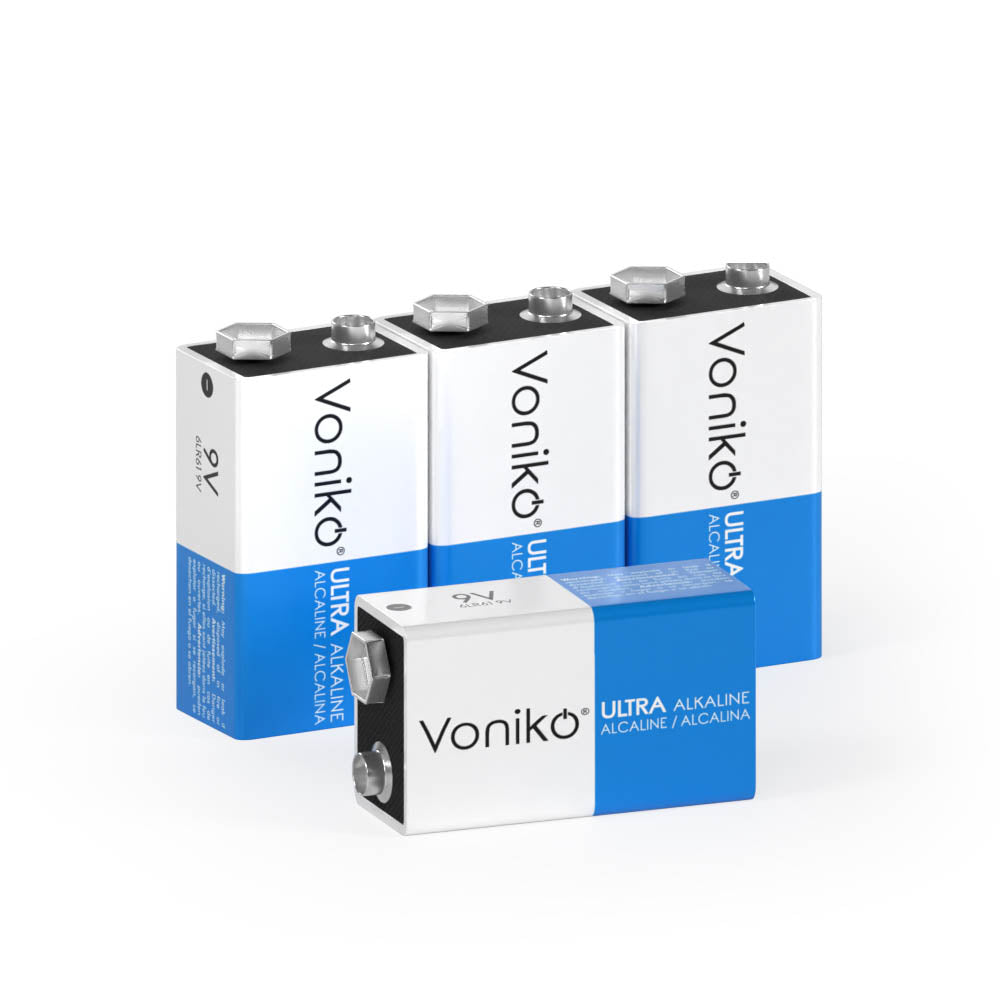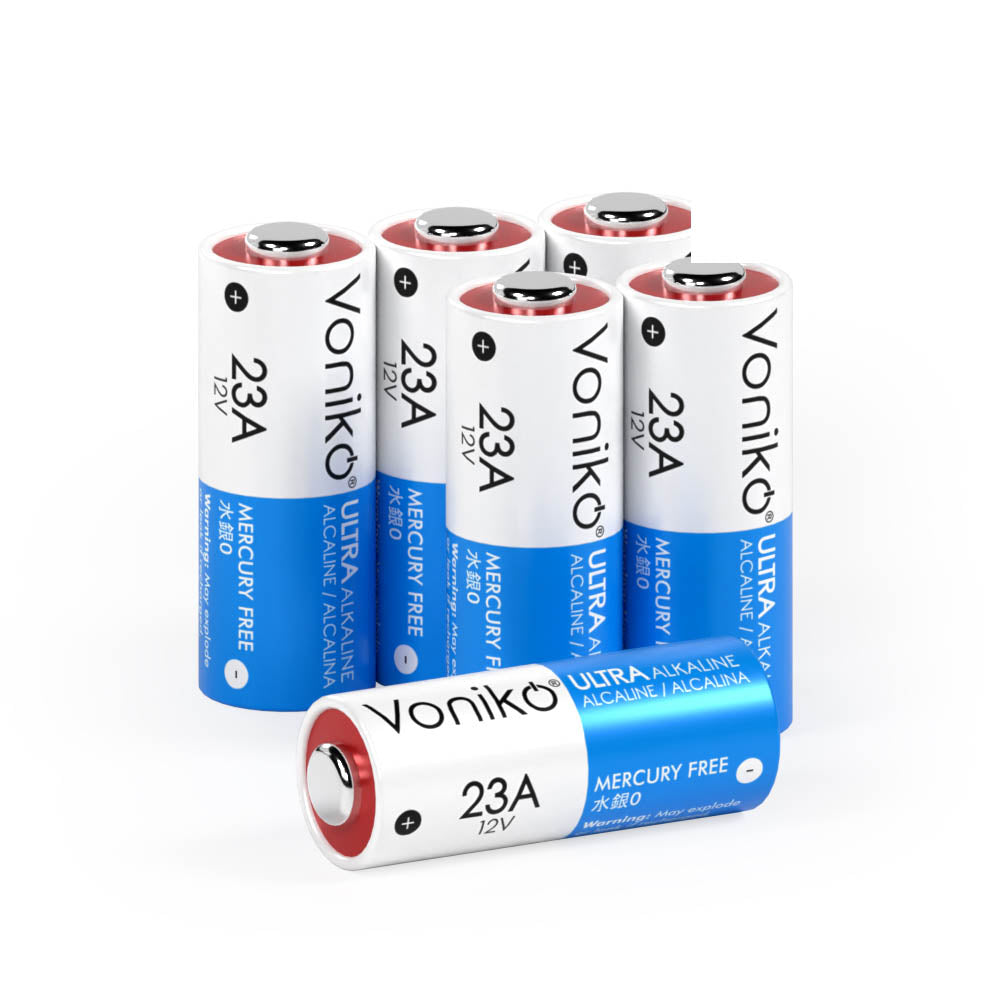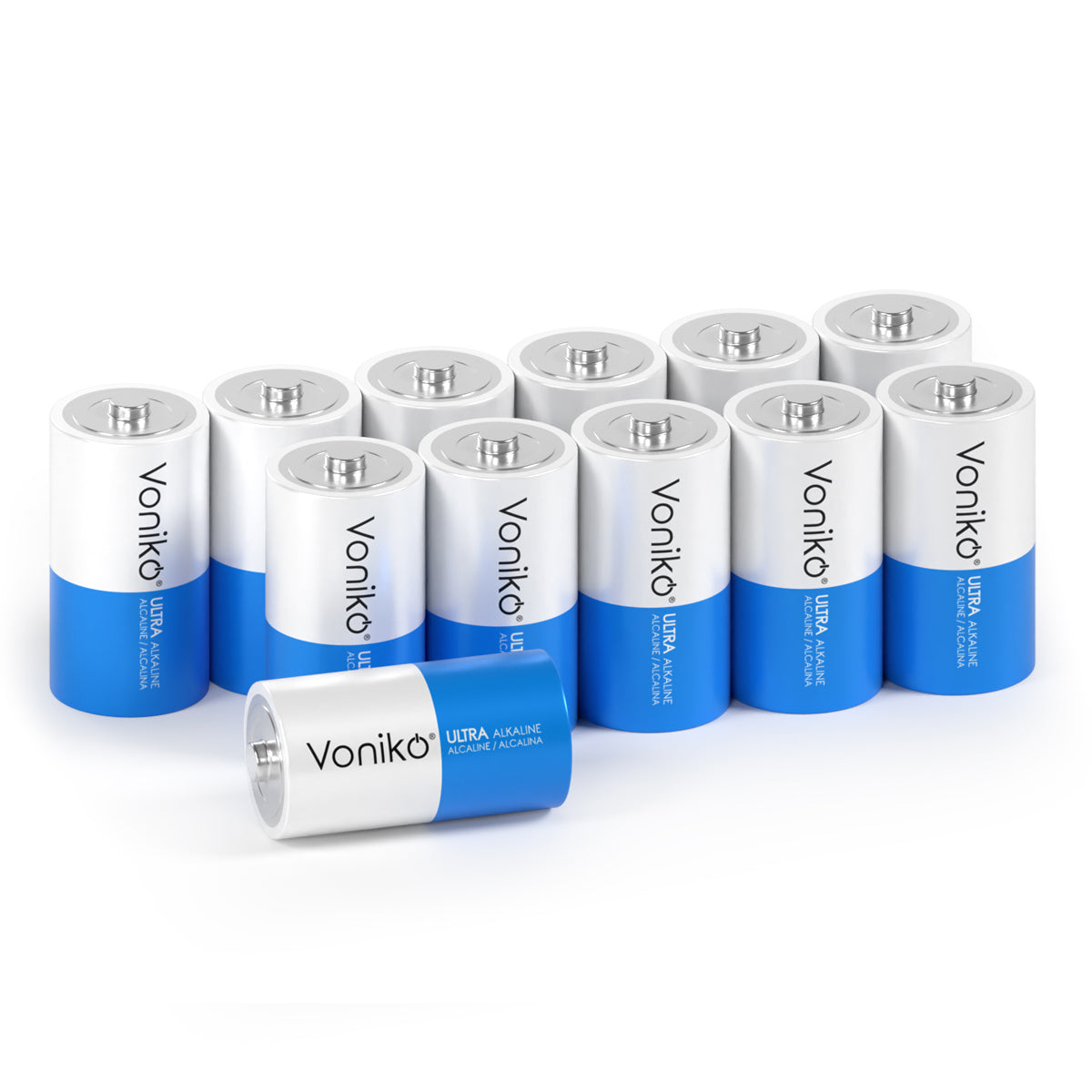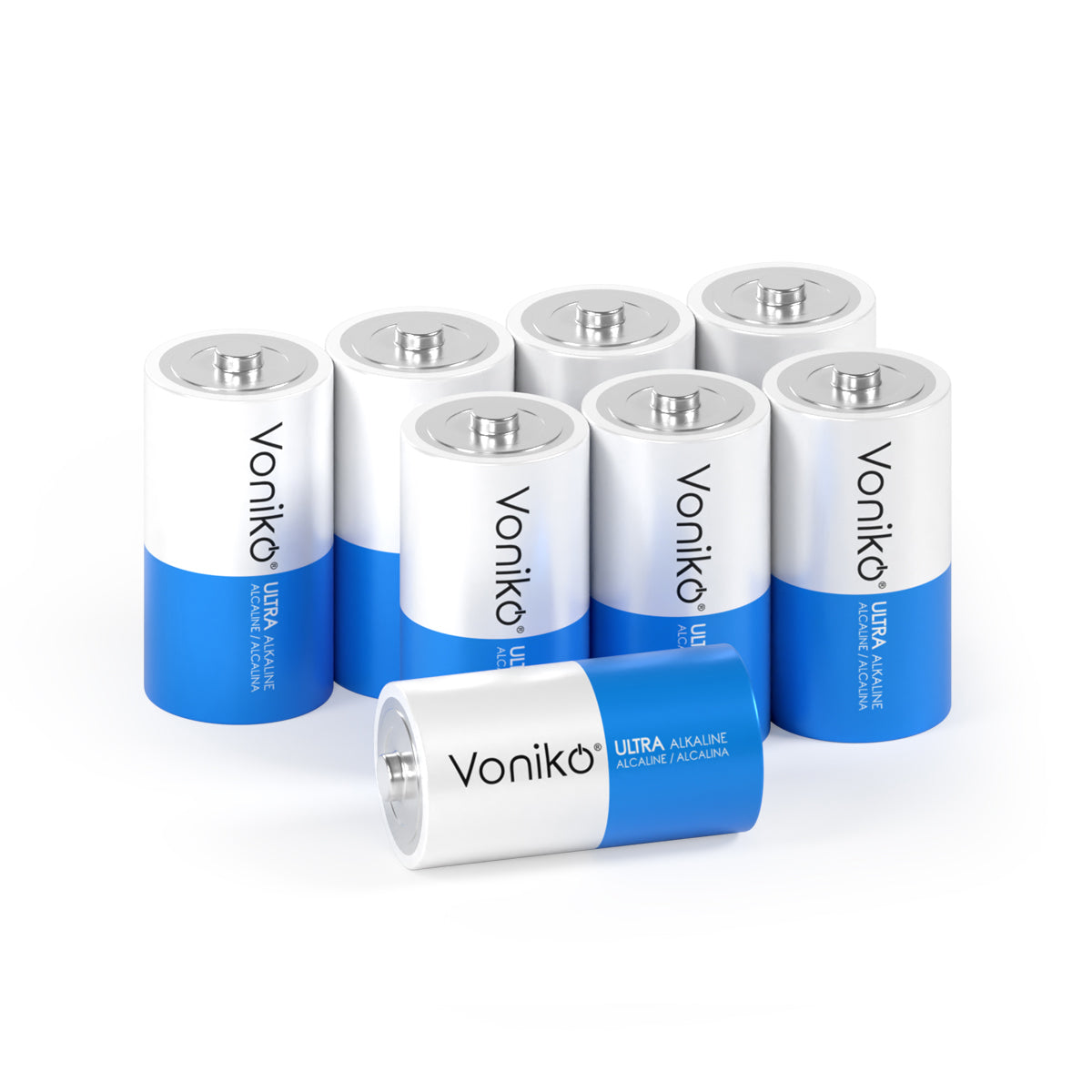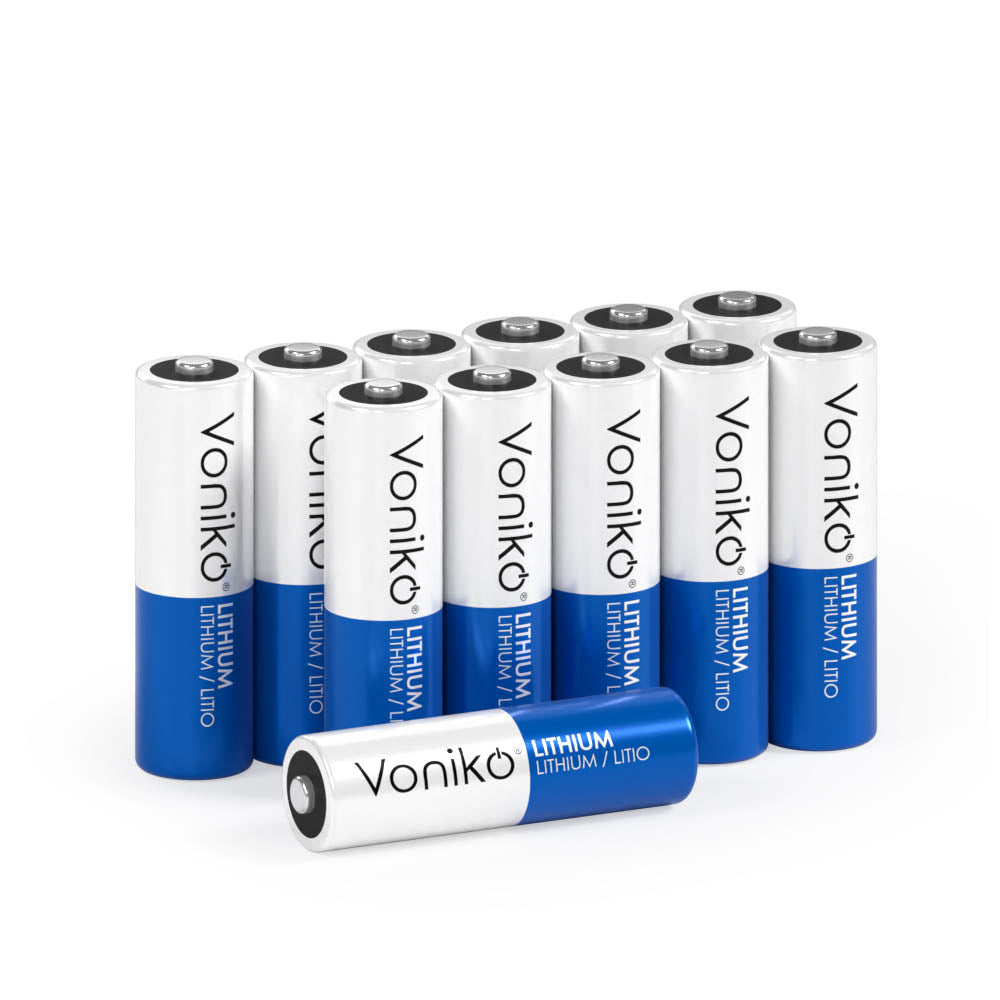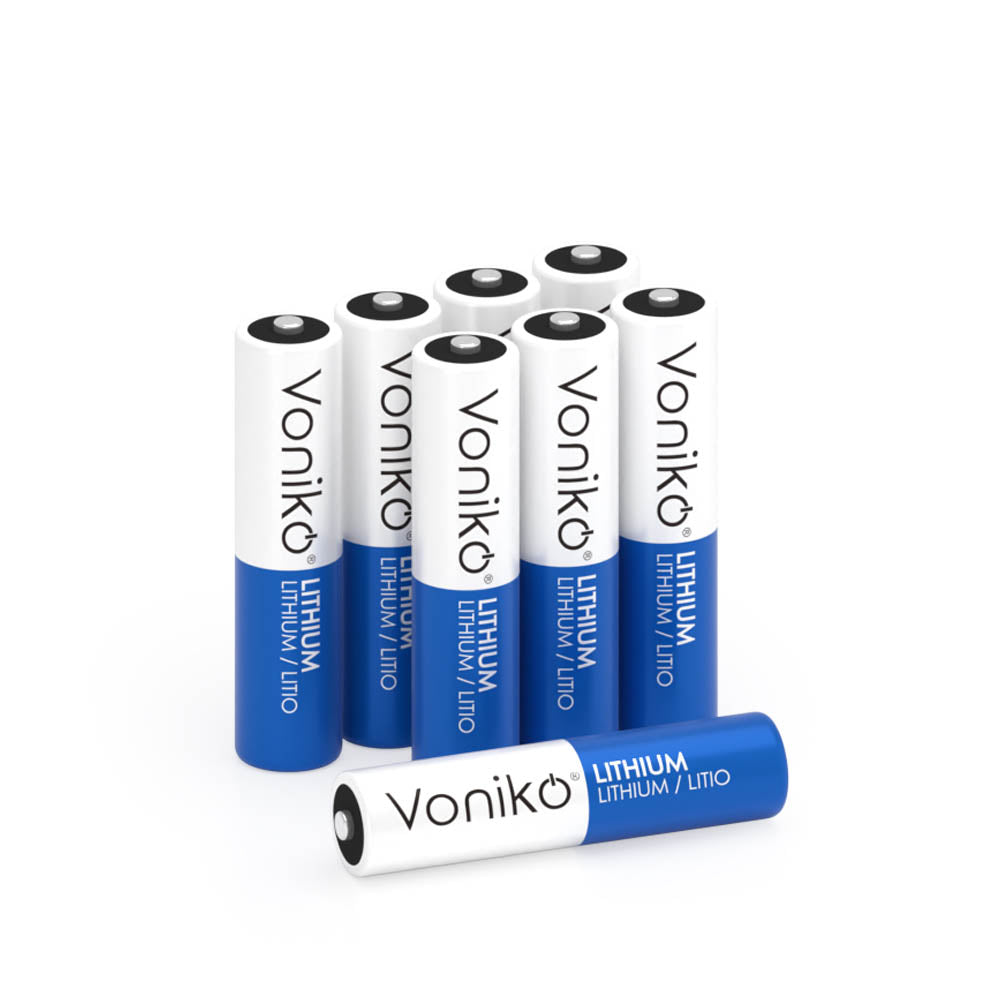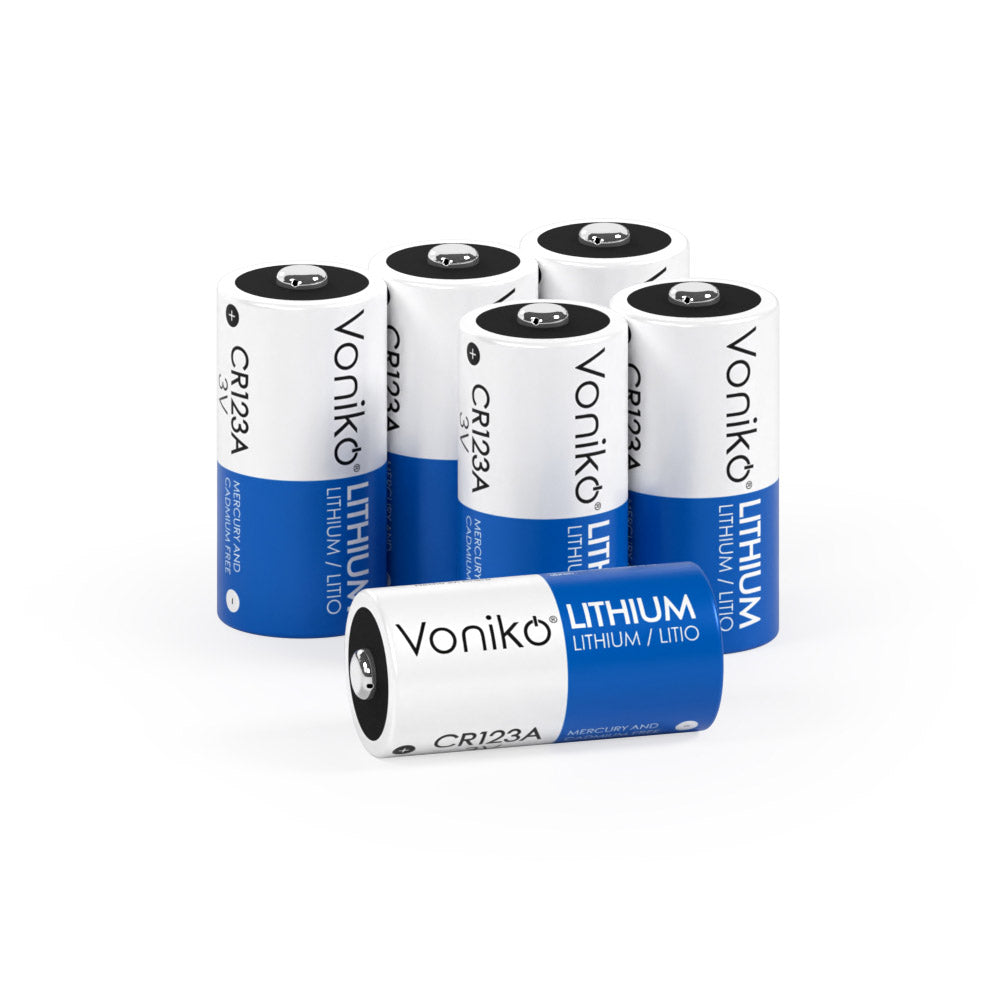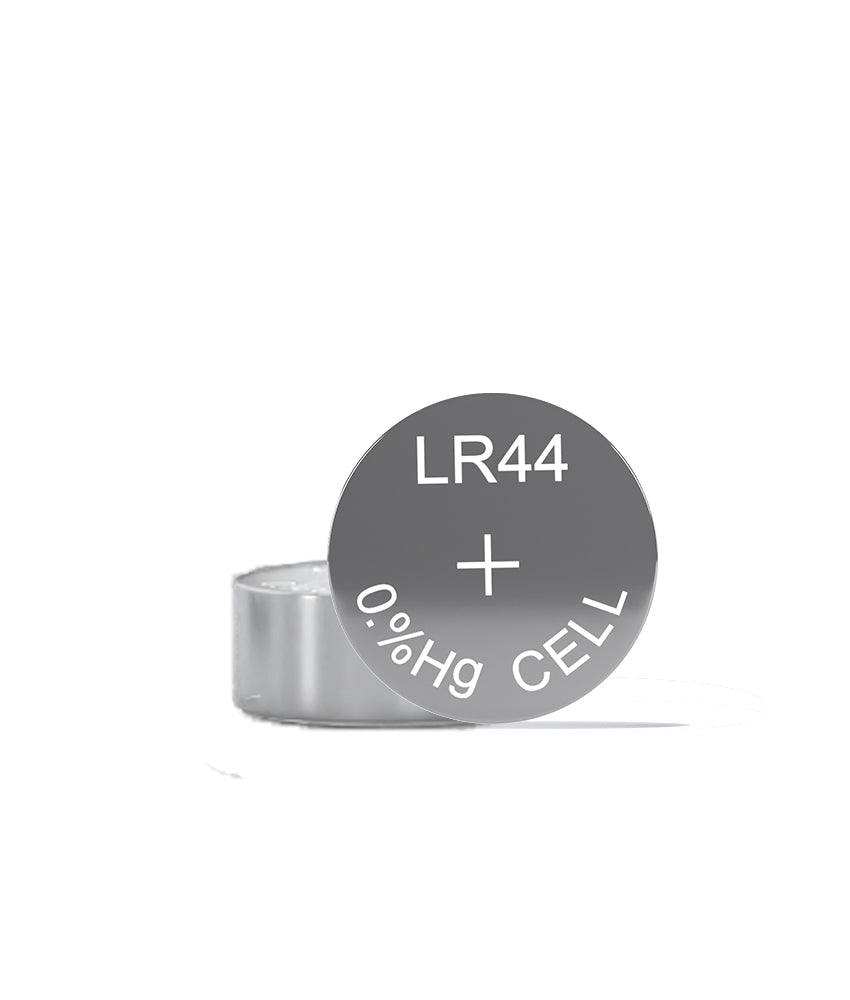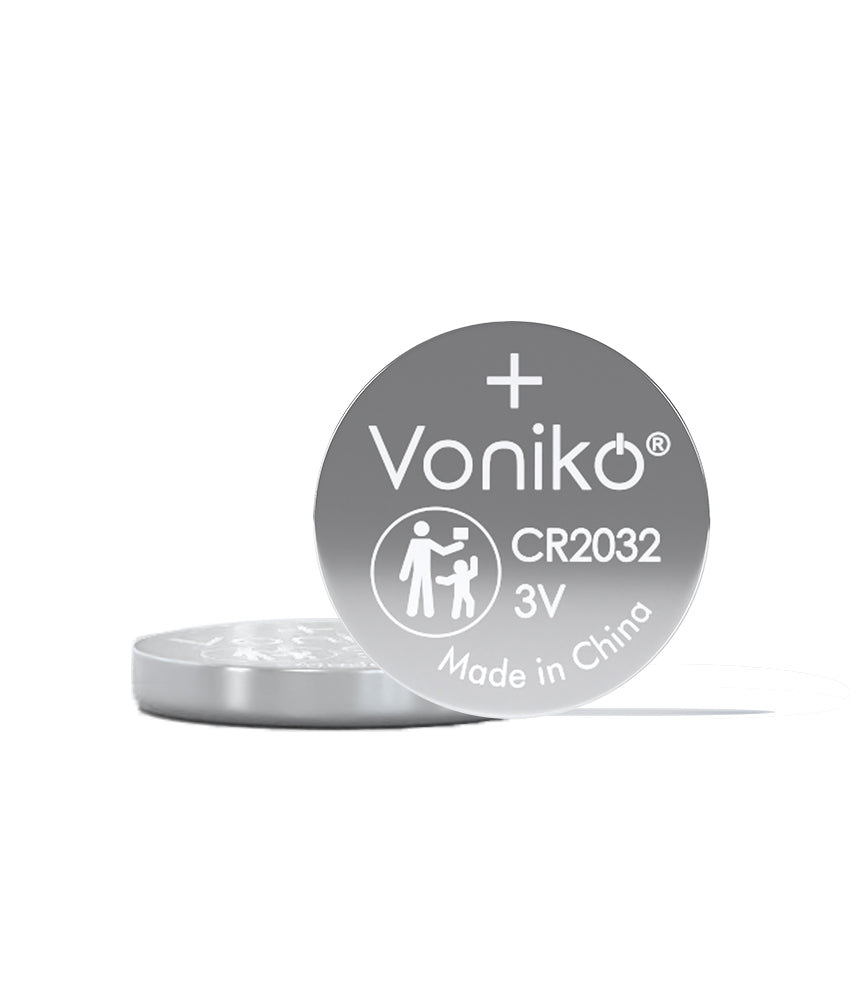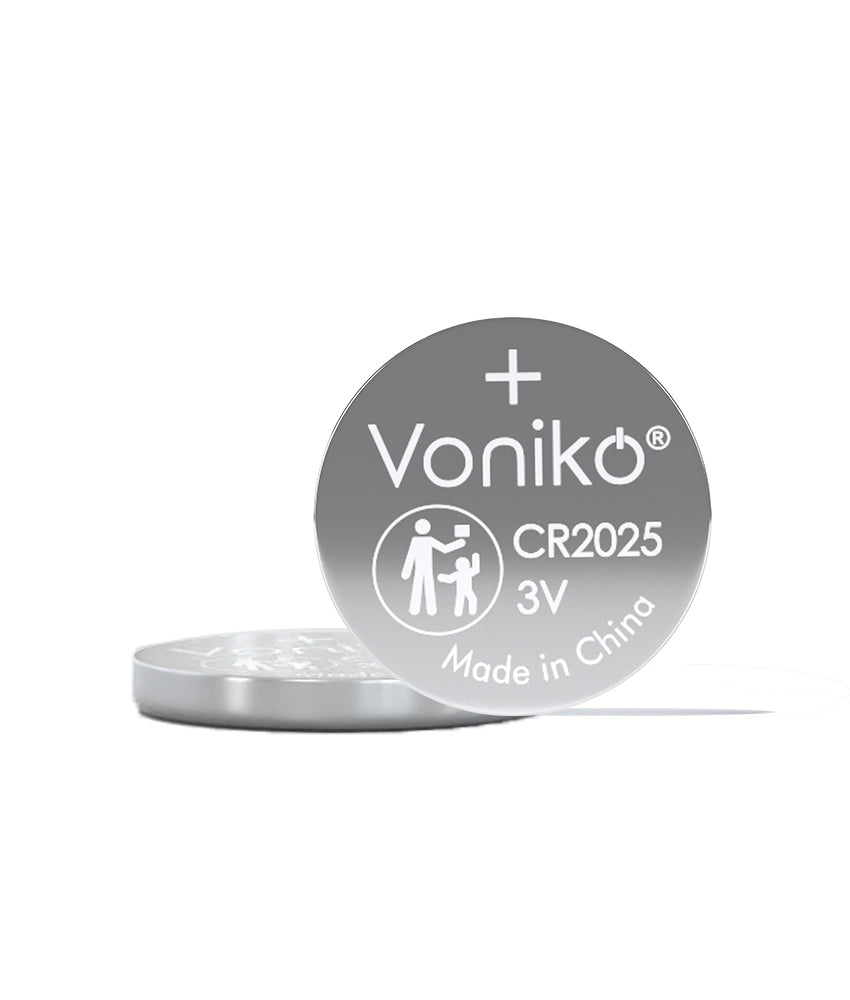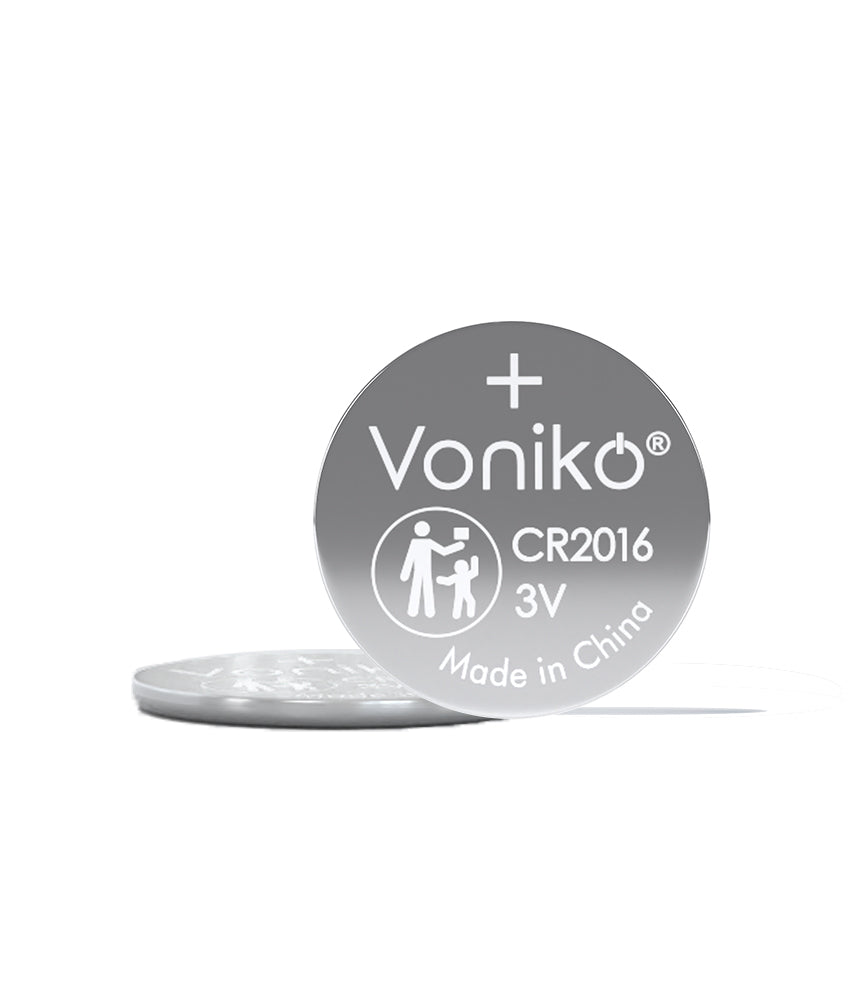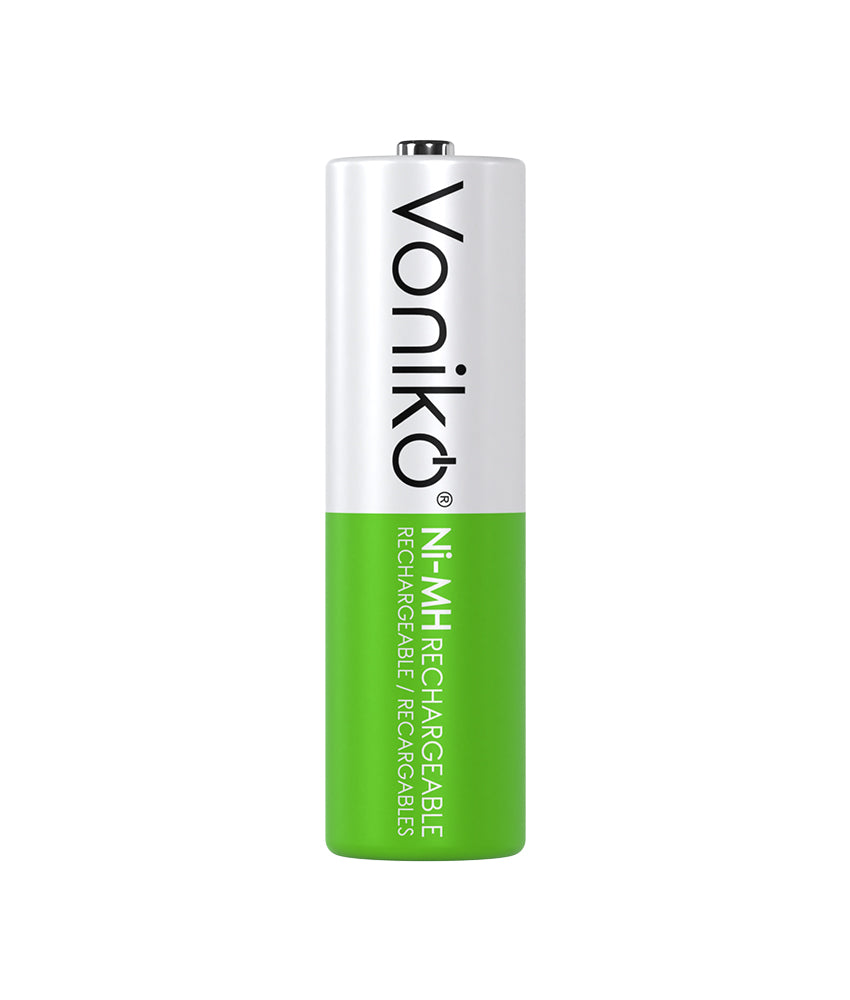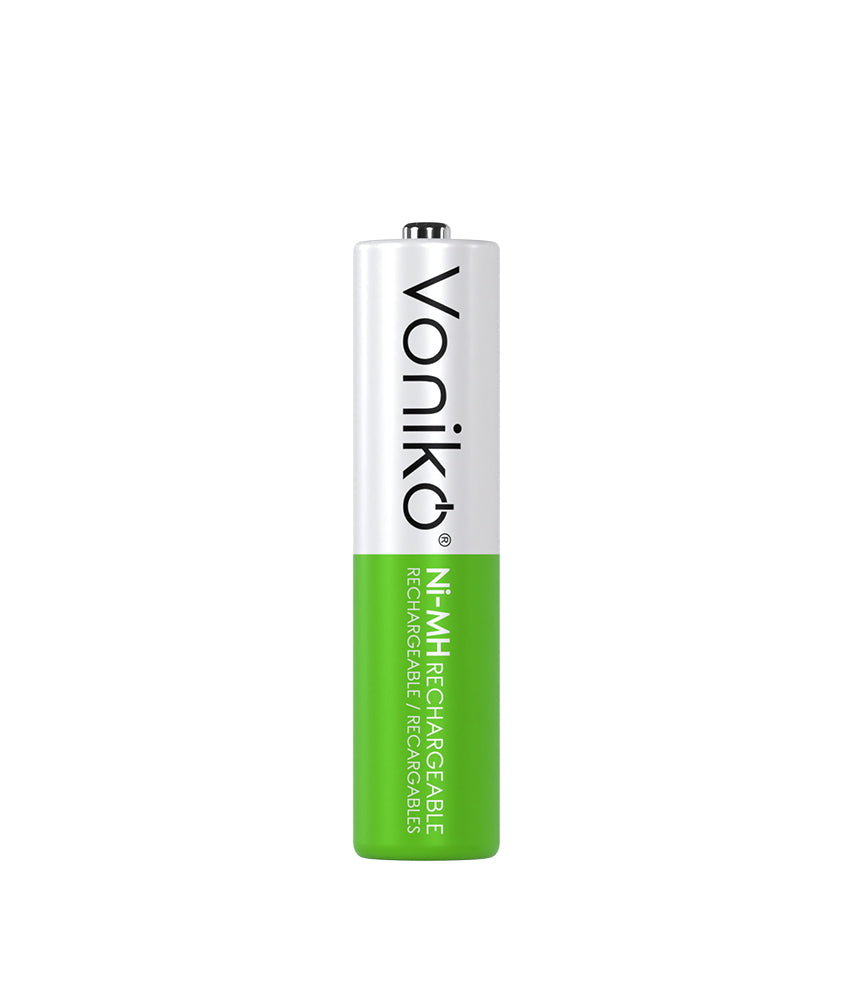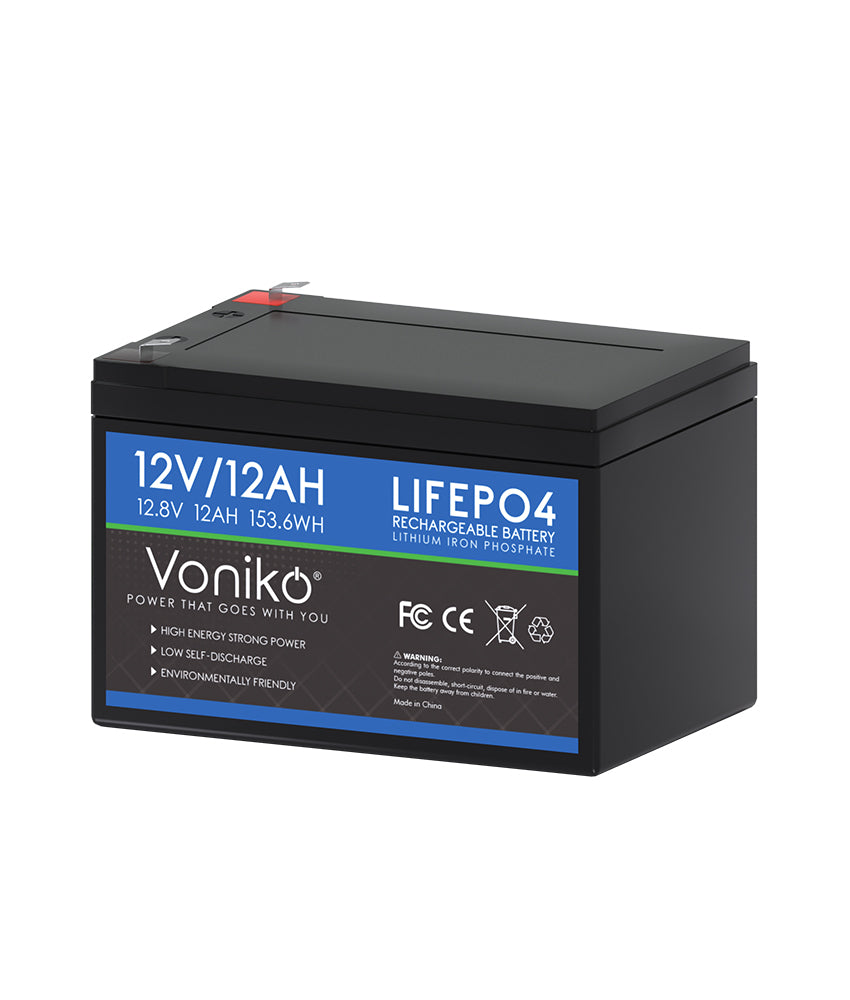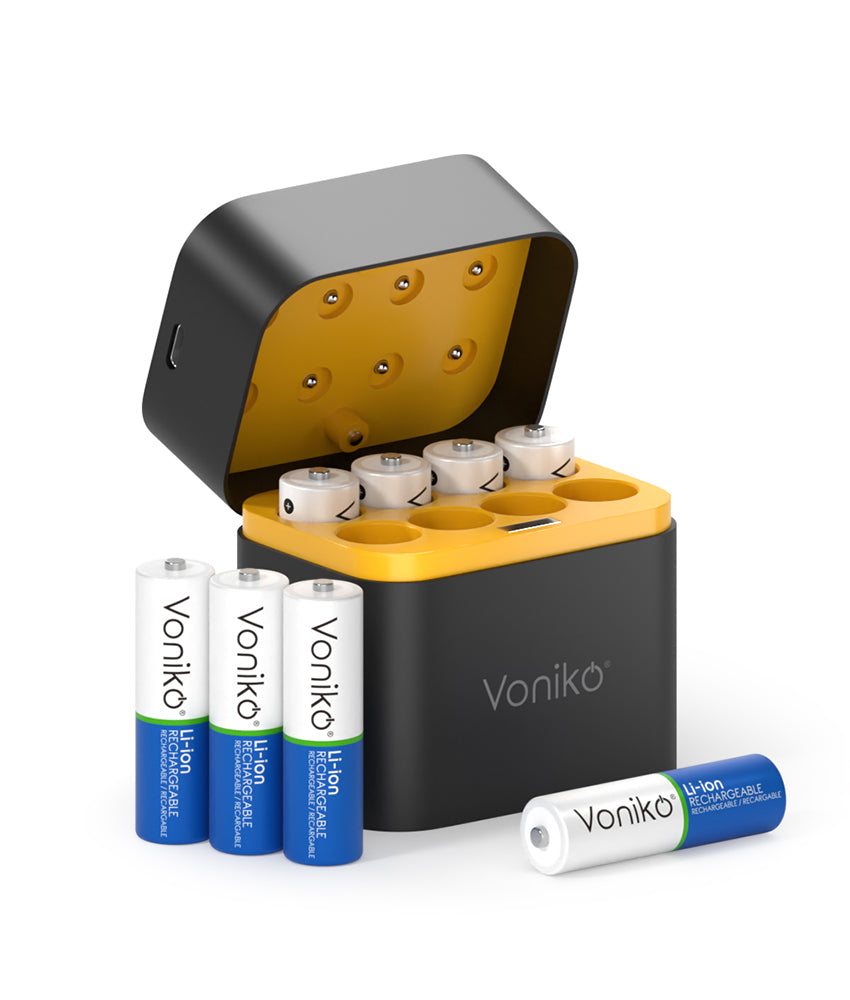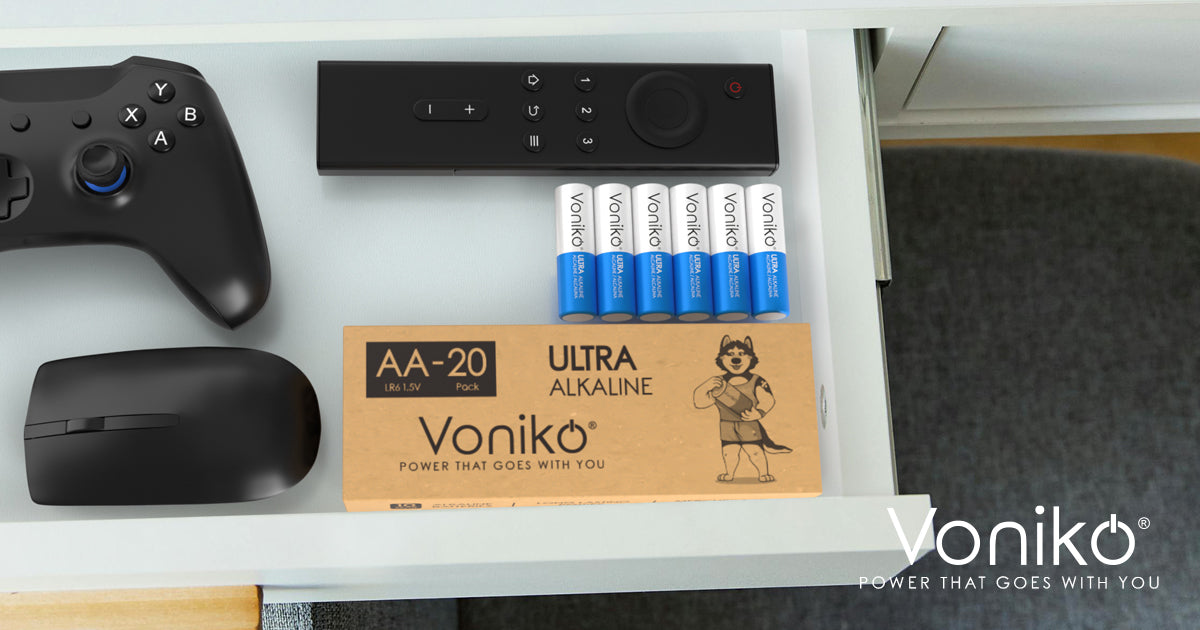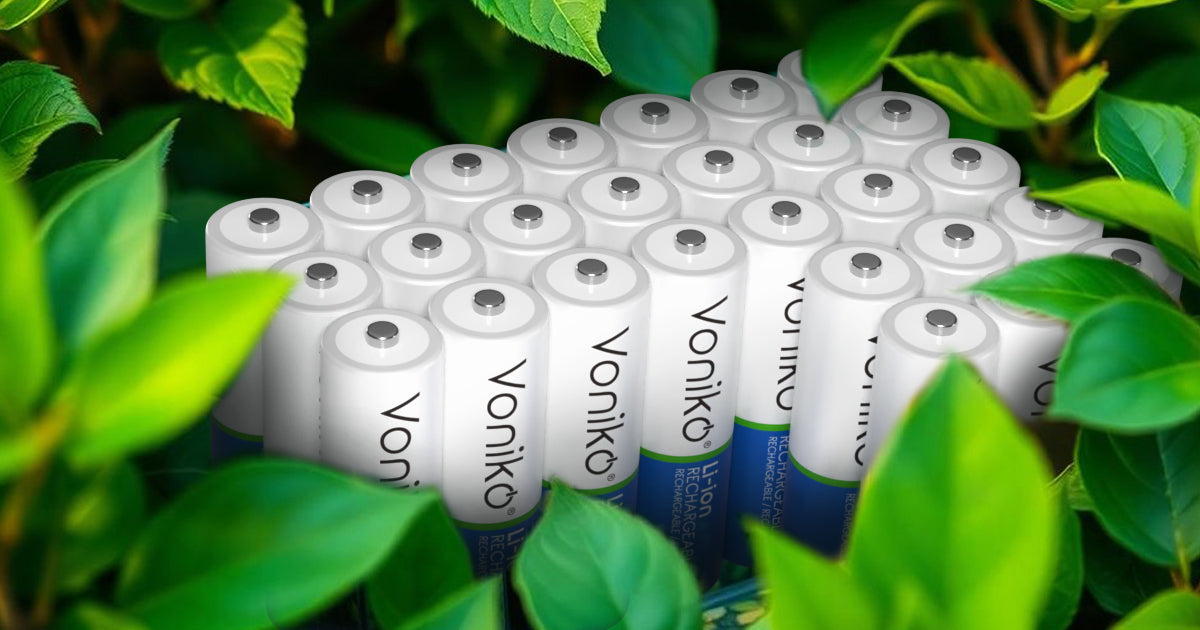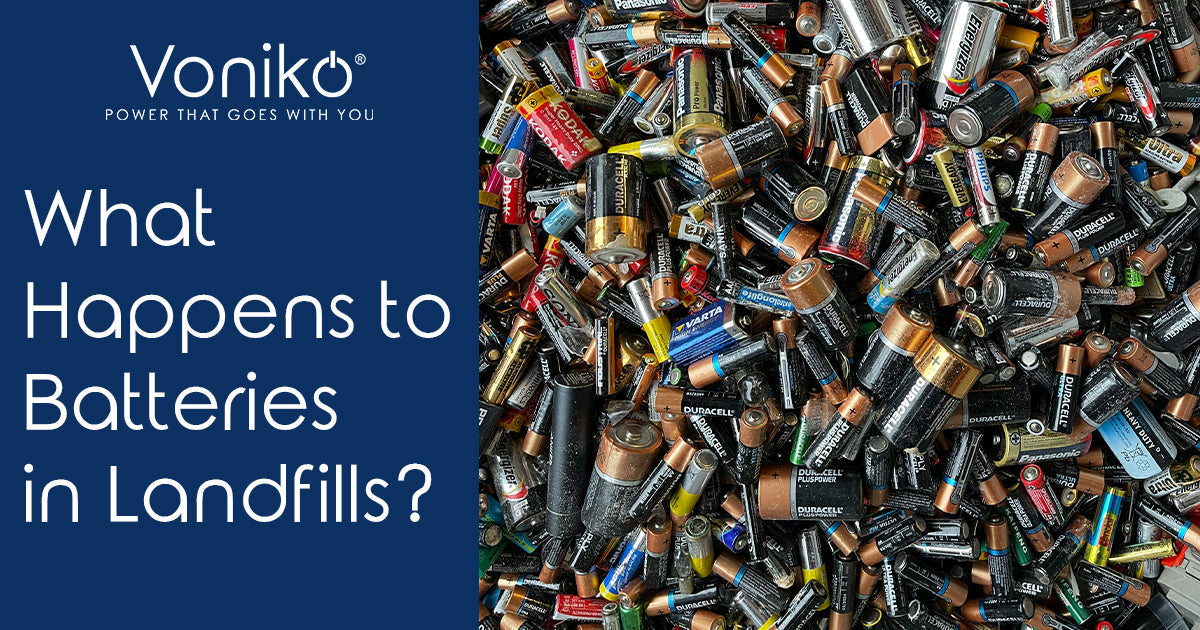Proper battery maintenance can help your batteries last longer and have better lifespan. But how? If you have bought Voniko's batteries yet still don't know how to maintain them. That might be a waste.
But worry not, today our comprehensive guide covers maintenance tips for all Voniko battery types—from everyday alkaline batteries to specialized lithium coin cells and rechargeable options.
Follow these recommendations to get the most power from your Voniko batteries.
General Battery Care for All Types

Regardless of which Voniko batteries you use, these universal practices will help maintain performance and safety:
Proper Storage
- Store batteries in a cool, dry place at room temperature 50-77°F (10-25°C)
- Avoid extreme temperatures—never leave batteries in direct sunlight or freezing conditions
- Keep batteries in original packaging until ready for use
- Store away from metal objects that could cause short circuits
- Keep out of reach of children and pets
Handling & Safety
- Never attempt to recharge non-rechargeable batteries
- Don't mix different battery types, brands, or old and new batteries in the same device
- Insert batteries with correct polarity (+/-) as indicated on device
- Remove batteries from devices that won't be used for extended periods
- Clean battery contacts in devices occasionally with a dry cloth
- If battery leakage occurs, wear gloves, clean with a damp cloth, and wash hands afterward
Voniko Alkaline Battery Maintenance
For Premium Alkaline AA, AAA, 9V, 23A, and LR44 batteries
Voniko alkaline batteries are designed for reliable everyday use in a wide range of devices. These maintenance tips will help you maximize their performance:
Ideal Applications
- AA/AAA Alkaline: Best for moderate-drain devices like remote controls, clocks, toys, and basic electronics
- 9V Alkaline: Ideal for smoke detectors, guitar pedals, and portable audio equipment
- 23A Alkaline: Perfect for garage door openers, car key fobs, and wireless doorbells
- LR44/AG13 Alkaline: Designed for small electronics, calculators, and medical devices
Usage Tips
- For devices with inconsistent usage patterns, alkaline batteries often provide the best value
- Replace all batteries in a device simultaneously for optimal performance
- Check battery compartments periodically for early signs of leakage
- In high-drain devices, keep spare batteries available as alkalines discharge faster in these applications
Longer Shelf Life
- Voniko alkaline batteries have a shelf life of up to 10 years when stored properly
- Rotate your battery stock—use older batteries first (check the expiration date)
- For bulk purchases, keep original packaging sealed until needed
- Store at approximately 50-60% humidity (avoid extremely dry or humid environments)
Voniko Lithium Battery Maintenance
For Lithium AA, AAA, CR123A, CR2, 9V, and Coin Cell (CR2032, CR2025, CR2016) batteries
Voniko lithium batteries offer superior performance in high-drain devices and extreme conditions. Follow these maintenance tips to maximize their advantages:
Ideal Applications
- Lithium AA/AAA: Best for high-drain devices like digital cameras, flashlights, and outdoor equipment
- CR123A/CR2: Ideal for cameras, security devices, and specialized electronics
- Lithium 9V: Perfect for smoke detectors and professional audio equipment
- Coin Cells: Designed for watches, medical devices, car key fobs, and small electronics
Temperature Considerations
- Lithium batteries significantly outperform other types in extreme temperatures
- In cold environments (-4°F to 32°F/-20°C to 0°C), lithium batteries maintain performance while alkaline batteries lose capacity
- For outdoor winter use or refrigerated environments, lithium is the recommended choice
Long-Term Storage
- Voniko lithium batteries have an exceptional shelf life of up to 15 years
- No special rotation is necessary, but using oldest stock first is still good practice
- Self-discharge rate is extremely low (less than 1% per year)
- For coin cells, keep in original packaging until needed to prevent accidental discharge
Special Handling Notes
- Lithium batteries contain more energy than alkaline—keep away from metal objects and loose change
- For CR123A, CR2, and lithium 9V: if multiple batteries are carried together, keep in original packaging or use a dedicated battery case
- For coin cells: take special care to keep away from children as they pose a serious ingestion hazard
- Dispose of lithium batteries according to local regulations—never in household trash
Voniko NiMH Rechargeable Battery Maintenance
For NiMH AA and AAA rechargeable batteries
Voniko NiMH rechargeable batteries provide eco-friendly power for frequent-use devices. These specialized care instructions will help maximize their 1,000+ charge cycle potential:
Charging Best Practices
- Use a quality NiMH-specific charger—preferably one with individual charging channels
- Allow new batteries to complete 3-5 full charge cycles before regular use
- Don't leave batteries in the charger for extended periods after charging is complete
- Charge at room temperature for optimal results
- Avoid frequent partial discharges and charges when possible
Preventing Memory Effect
- Occasionally (every 10-15 cycles) allow NiMH batteries to fully discharge before recharging
- If batteries seem to lose capacity, try performing several full discharge/recharge cycles to recondition them
- Use a charger with a "refresh" or "recondition" function for maintenance
Storage Recommendations
- Store at approximately 40% charge (not fully charged or discharged)
- For long-term storage, recharge every 3-6 months to prevent complete discharge
- Store in a cool place—high temperatures accelerate self-discharge
Extending Cycle Life
- Avoid high-temperature environments
- Don't mix batteries with different charge states in the same device
- Allow batteries to cool after charging before using in devices
- Label batteries with purchase date to track age
Voniko Lithium Rechargeable AA Maintenance
For 1.5V Lithium AA Rechargeable batteries
Voniko's innovative 1.5V lithium rechargeable AA batteries combine lithium-ion technology with the convenience of standard AA form factor. These specialized maintenance tips will help you achieve optimal performance:
Charging System
- Always use the provided Voniko smart charging case
- Allow the charging system to complete the full charging cycle—green LED indicators will remain solid when complete
- The smart charging system prevents overcharging, but it's best not to leave batteries in the charger for days after completion
Performance Optimization
- Unlike NiMH batteries, these maintain a steady 1.5V output throughout discharge
- No break-in period required, but allowing 2-3 complete charge/discharge cycles initially can optimize capacity
- Perfect for high-drain devices where consistent voltage is critical
Cycle Life Maximization
- Recharge when convenient—no need to wait for complete discharge
- Please charger and discharge the battery at least once every three month if it not use for a long time.
Voniko LiFePO4 Battery Maintenance
For 12V 100Ah LiFePO4 batteries with built-in BMS
Voniko's 12V LiFePO4 batteries represent specialized high-capacity power solutions for RVs, solar systems, and off-grid applications. Their maintenance requirements differ significantly from consumer batteries:
Charging Parameters
- Use a LiFePO4-specific charger with correct voltage parameters
- The built-in 20A BMS (Battery Management System) provides protection, but proper charging is still essential
- Optimal charging voltage: 14.2V-14.6V
- Float voltage: 13.3V-13.8V
Depth of Discharge (DoD)
- Can safely discharge to 80-100% DoD, but regular cycles to 80% maximize lifespan
- Unlike lead-acid batteries, partial discharge causes no harm
- For longest service life, maintain state of charge between 20% and 90%
Temperature Management
- Operate within temperature range of 32°F to 131°F (0°C to 55°C)
- Charging at temperatures below freezing can damage the battery permanently
- If used in cold environments, consider an insulated battery box
- Monitor temperature during high current discharge applications
Long-Term Storage
- Store at approximately 50% state of charge
- Disconnect from all loads to prevent parasitic drain
- Check voltage every 3-6 months and recharge if below 13V
- Store in cool, dry conditions
Device-Specific Battery Selection
Choosing the right Voniko battery for each application ensures optimal performance and value:
Cameras & Photography Equipment
- Best choice: Voniko Lithium AA/AAA or CR123A (non-rechargeable)
- Why: Consistent high current delivery, excellent cold temperature performance, lightweight
- Alternative: Voniko Lithium Rechargeable AA for frequent users
Remote Controls & Basic Electronics
- Best choice: Voniko Alkaline AA/AAA
- Why: Good value, adequate performance for low-drain applications
- Alternative: Voniko NiMH Rechargeable for frequently used remotes
Smart Home & Security Devices
- Best choice: Voniko Lithium AA/AAA/CR123A
- Why: Long life, stable voltage, reliable in temperature extremes
- Alternative: Voniko Lithium Rechargeable AA for accessible devices requiring frequent replacement
Emergency Equipment
- Best choice: Voniko Lithium AA/AAA/CR123A
- Why: 15-year shelf life, extreme temperature tolerance, highest reliability
- Maintenance tip: Check annually and rotate stock every 5-7 years even if unused
Children's Toys
- Best choice: Voniko NiMH Rechargeable AA/AAA
- Why: Economical for frequent use, environmentally friendly
- Alternative: Voniko Alkaline AA/AAA for less frequently used toys
Smoke Detectors
- Best choice: Voniko Lithium 9V
- Why: Up to 10 years of service, reducing the frequency of battery changes
- Maintenance tip: Test monthly, replace battery annually if using alkaline
Troubleshooting Common Battery Issues
Unexpected Device Shutdown
Possible causes:
- Battery depleted more quickly than expected
- Poor contact between battery and device terminals
- Temperature extremes affecting performance
Solutions:
- Clean device contacts with isopropyl alcohol and a cotton swab
- Consider upgrading to a higher-capacity battery type
- Check for device issues that may cause excessive power drain
Leaking Batteries
Possible causes:
- Batteries left in unused devices for extended periods
- Mixing old and new batteries
- Physical damage to battery
Solutions:
- Remove batteries from infrequently used devices
- Clean affected areas with a baking soda solution
- Always replace all batteries in a device simultaneously
Rechargeable Batteries Not Holding Charge
Possible causes:
- Battery approaching end of useful cycle life
- Improper charging practices
- Exposure to high temperatures
Solutions:
- Try reconditioning with a complete discharge/recharge cycle
- Check charger functionality
- Replace batteries that have exceeded their rated cycle life
Environmental Responsibility
Voniko is committed to minimizing environmental impact through product design and proper end-of-life handling:
Battery Recycling
- Never dispose of batteries in regular household trash
- Recycle all battery types through appropriate channels:
- Retail collection points (many electronics and home improvement stores)
- Community hazardous waste facilities
- Battery recycling mail-back programs
Reducing Battery Waste
- Choose the right battery for each application to maximize lifespan
- Consider Voniko rechargeables for frequently used devices
- For occasional-use devices, lithium batteries' long shelf life reduces waste from expired unused batteries
Frequently Asked Questions
Q: How can I identify which Voniko battery type is best for my specific device?
A: Check your device's user manual for recommended battery types. Generally, high-drain devices (cameras, flashlights) benefit from lithium batteries, while moderate-drain devices (remote controls, clocks) work well with alkaline. For frequently replaced batteries, rechargeable options offer the best value.
Q: Can I mix different Voniko battery types in the same device?
A: We don't recommend mixing different battery types (alkaline, lithium, NiMH) or batteries with different charge levels in the same device. This can lead to performance issues, potential leakage, and reduced overall runtime.
Q: How do I know when my Voniko rechargeable batteries have reached end-of-life?
A: NiMH batteries typically last 500-1,000 cycles, while Lithium rechargeables can achieve up to 1,900 cycles. Signs of end-of-life include significantly reduced runtime (less than 50% of original capacity), inability to hold charge, or physical deformation.
Q: Are there special considerations for using Voniko batteries in extreme temperatures?
A: For cold environments, Voniko lithium non-rechargeable batteries offer the best performance. Alkaline batteries lose significant capacity below freezing. For high-temperature environments, all batteries suffer, but lithium types generally perform better.
Q: How can I maximize the value of my Voniko battery investment?
A: Choose the right battery chemistry for each application, follow proper storage guidelines, use rechargeable options for high-use devices, and implement device-specific power-saving features when available.
Conclusion: Powering Your World Reliably
Proper battery maintenance isn't just about extending life—it's about ensuring your devices work reliably when you need them most. By following the guidelines in this maintenance guide for your specific Voniko battery types, you'll maximize performance, reduce waste, and ensure the best value from your battery investment.
For additional support or questions about any Voniko battery products, please contact our customer service team at support@vonikoshop.com.
Thank you for choosing Voniko—reliable power for every need!

